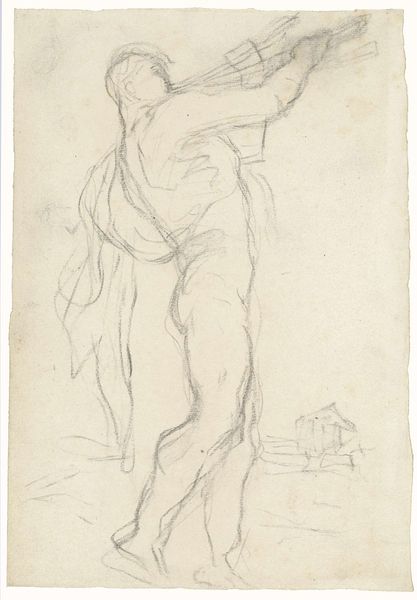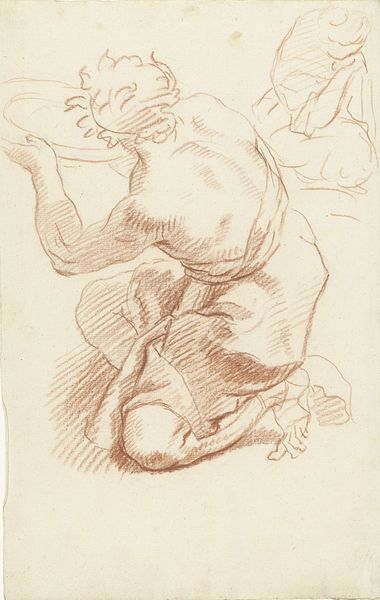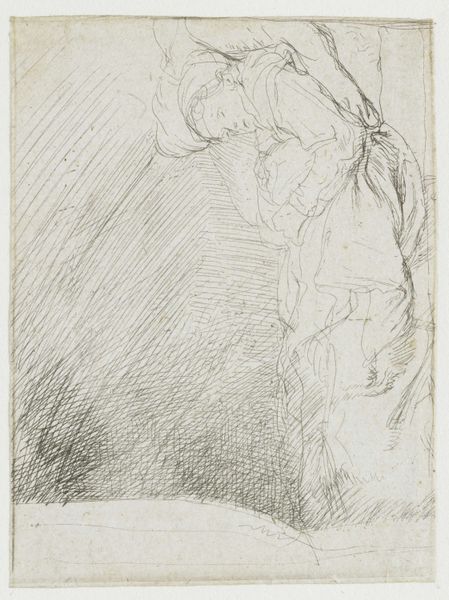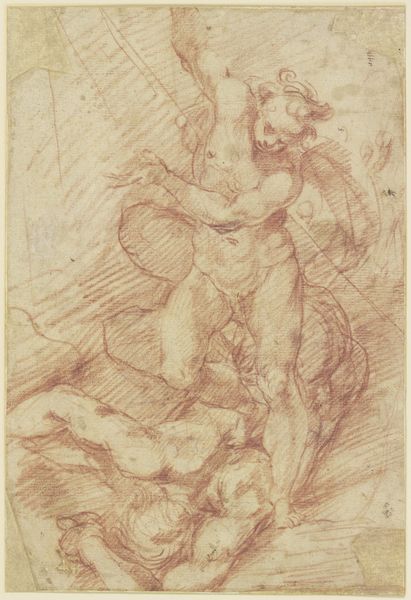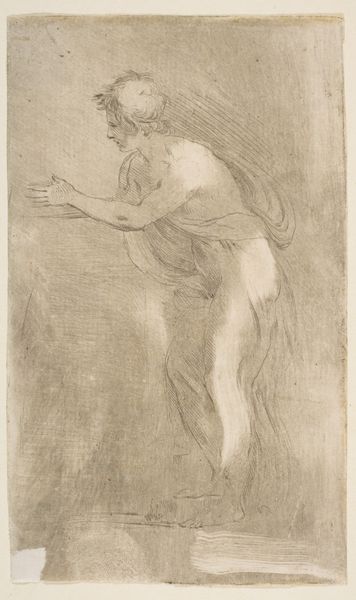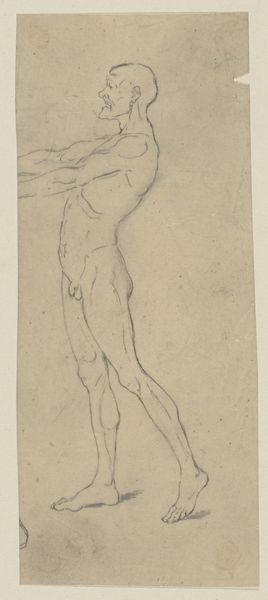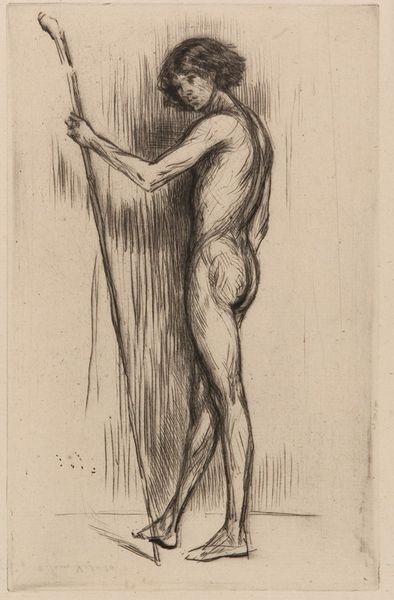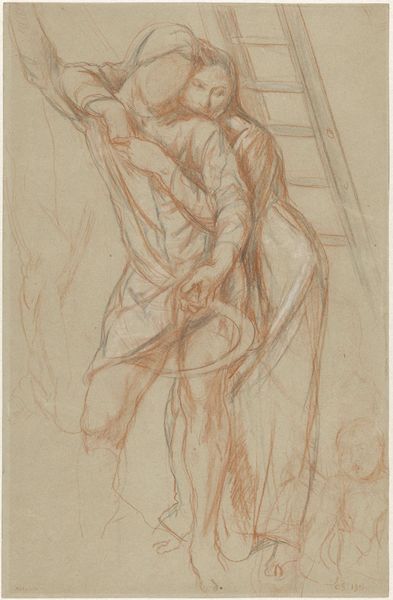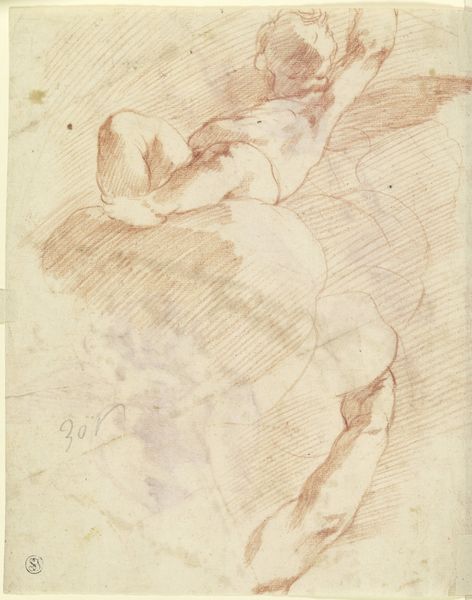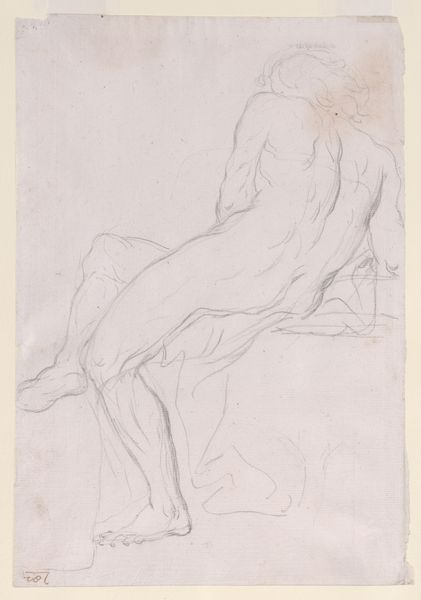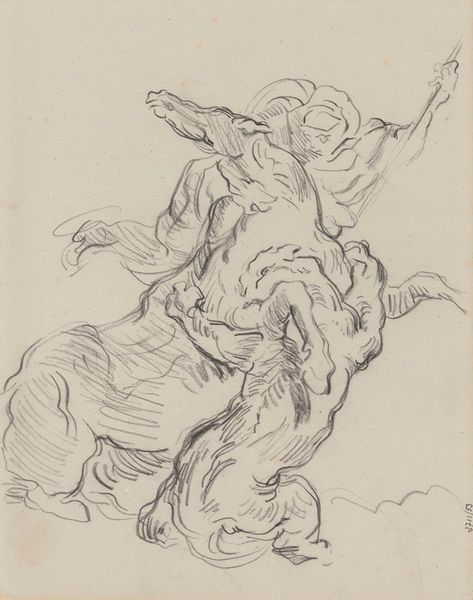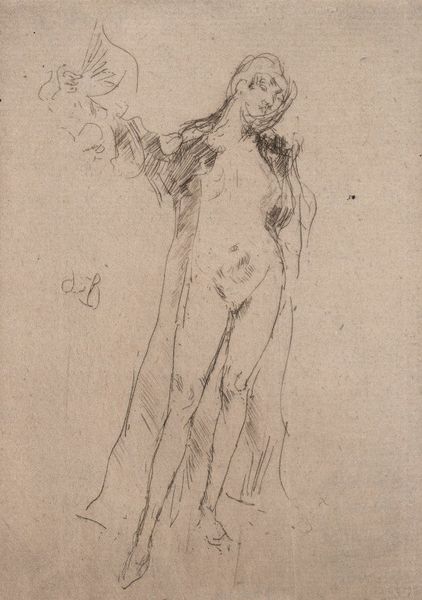
drawing, paper
#
portrait
#
drawing
#
pencil sketch
#
paper
#
portrait drawing
#
history-painting
#
rococo
Dimensions: height 326 mm, width 208 mm
Copyright: Rijks Museum: Open Domain
Curator: Look at this drawing – "Study of a Seated Diana," dating somewhere between 1715 and 1798, attributed to Dionys van Nijmegen. Editor: My immediate sense is one of captured movement. There's such freedom in the lines, like a fleeting thought sketched on paper. A sort of… poised alertness. Curator: Precisely! This preliminary sketch for a history painting has all the lightness and energy of Rococo. The pencil rendering lends itself beautifully to that airiness, doesn't it? Diana, the huntress, caught in a moment of contemplative repose. But it is fleeting – the eyes glancing elsewhere, like she is already moving toward action. Editor: That makes sense, the dynamic posture speaks to this tension. It makes me wonder about the enduring symbolism of Diana herself. This powerful goddess of the hunt, of nature and the moon. Curator: She represents a wildness, independence – untamed, if you will. Think about the quivers visible behind her, as van Nijmegen translates that into a Rococo language of elegant draftsmanship. But tell me, is that Rococo sensibility simply about elegance? Or something more? Editor: I see something complex at play here. Diana, in that era, was associated with powerful women and independent, learned aristocratic woman, with connections to royalty or immense political influence. And while the era can feel a bit…over the top and self-absorbed in popular understanding…the symbolic language is deeper. Curator: Interesting idea. There's an inherent drama in this piece, a theatrical sensibility, a playfulness of lines… almost operatic. Perhaps it does signal social and personal freedoms in a restricted era! I hadn't considered that interpretation. Editor: Well, these echoes and shadows are embedded, even unintentionally, in imagery. Even as artists strive for "divine" inspiration they communicate complex, historical experience! It also says so much about van Nijmegen’s preparation, the artist mapping the human form and then the layers of meaning atop that. Curator: It certainly gives the drawing new life! Now I see not just a figure study, but also a subtle cultural artifact of its time. Thanks! Editor: My pleasure. All art invites dialogue, right? A continued unpacking…a cultural echo in time.
Comments
No comments
Be the first to comment and join the conversation on the ultimate creative platform.

